Midlife, Swimming Pools and Death
La madurez, las albercas y la muerte
Lorís Simón Salum
Some argue there is no such thing as a midlife crisis. From a strictly physical lens, I suppose a crisis is only a crisis if you make it into one. “It is all in your head,” they’d say. It is just not that simple though, is it? The classic situation is the following: aging parents, children transitioning into adulthood, health declining, death approaching, and most importantly, perspective changing. What is most valuable to me in the midst of the chaos is the widening, the broadening of one’s perception. Take a few of marbles to represent life’s problems and drop them into a full cup of water. Most likely, the water will overflow. Take those same marbles and drop them into a swimming pool. Most likely, no one will ever find your marbles again. The metaphor here focuses the attention of midlife from a question of crises to a matter of inner bandwidth. The grand majority of the lucky members of the 40 plus club can attest to their capacity for managing any given situation better now than they would have in their 20’s. Yet midlife is not about the contrast of the younger years, rather a confrontation with the years to come. Yes, you have a pool instead of a cup, but can you swim?
Erik Erikson, in his theory of development, would give his two options during this stage of life: generativity or stagnation. Will you generate, perhaps re-generate? Or will you stagnate? I know one thing for sure, neither you nor I will live forever. I also know that neither you nor I will ever receive an omniscient letter grade in life. It is all a matter of perspective within a given timeframe. Have you gotten what you wanted? Is what you wanted still worth it? Desire is such an ephemeral phenomenon. The concrete kinds of wishes are usually driven by good advertisement. Jackson’s (2021) article explores how mid-century studies reveal age-linked marketing taking the reins on personal life course aspirations. He states, “Marketing techniques that played on age as a measure of achievement—or failure—were echoed in advertisements… From the early twentieth century, it became commonplace not only to measure life in annual or decennial increments, but also to evaluate individual and family progress against age-specific benchmarks of status and success, at home as much as at work” (Jackson, 2021, p. 350). On a separate fragment of the desire spectrum, there are the other kinds of yearnings that tend not to be available to the naked eye. They blossom with time. It takes the clock a few thousand rounds for those pair of eyes to bud into existence. There is a flexibility that strengthens from looking outward to looking inward. What then? Reaching a place where there are scarcely any examples to draw a conjecture from, you are left with no points of reference as to how to proceed.
Distance has a way of skewing the horizon. Culturally, there is an emotional distance from older generations, and there is also a rarely-discussed separateness from our existential context. I find the detachment from our grandparents’ generation somewhat of a result of the individualistic society we are embedded in, the prioritization of I over anything or anyone else. There is no intention behind my words of shedding a negative light on this phenomenon; it is what it is. The grand majority of us do not get to review our ascendants’ feelings about the changing world so that we have a documented timeline about the affectual evolution of our lineage. We are not raised to talk about these things because, depending on the background, the focus was likely elsewhere. I do wonder what could have changed if we did have a kind of biblical text that was passed down for the past 500 years, exclusive to each family. Maybe we would learn about how avoid the illusion of perfection, the repeated regrets, the missed opportunities. What a nice fantasy. Instead, every child will cross the same hurdles and travel through parallel doors, all in the silence of the generational gap.
When the conversations that matter are outside our reach, my inclination is to find the answers within (It sounds like something you would read from a fortune cookie, does it not?). Once more, we find ourselves without guidelines, without expectations, without anchors to pull us back into sanity. Distance, yet again, from the very existential questions that brought us to this world. The movie Wall-E (2008) was such a hit because of its blatant critique of the human condition. We don’t need to fly to deep space to relate to the disconnect from anything that we deem “natural.” There are narratives about women undergoing such existential shifts from a biological standpoint, an innate ritual that moves us into greater depths. I believe those discourses are hardly based on the “true true,” as the post-apocalyptic tribespeople from Cloud Atlas (2012) say, since neither menstruation nor childbirth guarantees greater knowledge of the self. There were also talks emerging from the mythopoetic men’s movement about ritual into new stages of life that sustained an inner transformation without losing sight of the community. These have hardly hit the surface. The biggest association to men’s midlife has been implanted by mainstream media depicting divorce, an expensive car and a voluptuous young woman. In regards to the queer community in midlife, there is much to be unfolded. We don’t share the deeper parts of our hearts, the areas that barely get sunlight. We seldom notice the invisible tides. We don’t talk about mentorship (the kind that’s free). We don’t bring up menopause. We look away from the impending threat of Atropos’ scissors.
Whether it is a midlife crisis or a midlife transition, I argue that the cultural term becomes irrelevant. There is surely something real that happens around that point, for better or for worse. Einstein said that time is not linear. No one manages to live life that way. What if, for a moment, we tried? What if there is a very real possibility of tuning into something timeless, a voice that is far wiser than our current years. The more we converse with it, the better we can distinguish the tones, the inflections, the volume, the infantile and the aged. When experiencing passages, there is something about the continuous practice of finding the eye of the storm. It a spiritual exercise, a settling into a timeless void, where you receive subtle glimpses of truth. Alluding to the initial conversation of this text, I believe this is when we learn how to swim. The experience is present. The bandwidth has been stretched. The muscles have been strengthened. The message has been voiced. Now then, how deep are you willing to go?
References
Brim, O.G. (1976). Theories of the male mid-life crisis. The Counseling Psychologist, 6(1), 2-9.
Harvard Business Review. (2008, February). The existential necessity of midlife change. https://hbr.org/2008/02/the-existential-necessity-of-midlife-change
Jackson, M. (2020). Life begins at 40: The demographic and cultural roots of the midlife crisis. Royal Society Publishing, 74, 345-364. doi:10.1098/rsnr.2020.0008
Jackson, M. (2021). Broken dreams: An intimate history of the midlife crisis. Journal of the History of the Behavioral Science, 57(4), 430-432.
Kuther, T.L. & Burnell, K. (2019). A life span developmental perspective on psychosocial development in midlife. Adultspan Journal, 18(1), 27-39.
Lomranz, J., Shmotkin, D., Eyal, N., & Friedman, A. (1994). Expectations for changes in midlife men. Social Behavior and Personality, 22(2), 111-122.
Stanton, A. (Director). (2008). WALL-E [Film]. Pixar Animation Studios.
The Walstreet Journal. (2014, October 12). The myth of the midlife crisis – WSJ. The Myth of the Midlife Crisis. https://www.wsj.com/articles/the-myth-of-the-midlife-crisis-1413147918
Tykwer, T., Wachowski, L., & Wachowski, L. (Directors & Writers). (2012). Cloud Atlas [Film]. Warner Bros. Pictures.
 Lorís Simón Salum is a psychotherapist in private practice in Houston, TX. She is the author of Ensoulment: Exploring the Feminine Principle in Western Culture (2016), as well as the film director of the multi award-winning documentary Ensoulment: A Diverse Analysis of the Feminine in Western Culture (2013). She was the Creative Director for Literal Magazine for over 10 years. Some of her projects included Literally Short Film Festival, Literal’s short international film festival, and Literally Everything, Literal’s podcast. You can find her at www.lorissimon.com.
Lorís Simón Salum is a psychotherapist in private practice in Houston, TX. She is the author of Ensoulment: Exploring the Feminine Principle in Western Culture (2016), as well as the film director of the multi award-winning documentary Ensoulment: A Diverse Analysis of the Feminine in Western Culture (2013). She was the Creative Director for Literal Magazine for over 10 years. Some of her projects included Literally Short Film Festival, Literal’s short international film festival, and Literally Everything, Literal’s podcast. You can find her at www.lorissimon.com.
Algunas personas argumentan que no existe tal cosa como la crisis de mediana edad. Desde un punto de vista estrictamente físico, supongo que una crisis solo es una crisis si decides verla así. “Todo está en tu cabeza”, te dirán. Sin embargo, no es tan sencillo. Las circunstancias clásicas son las siguientes: padres envejeciendo, hijos en transición de la pubertad a la adultez, salud en declive, la noción de que la muerte no está tan lejos, y por último, un cambio de perspectiva. Lo más valioso para mí en medio del caos es la posibilidad de expansión, de ensanchamiento: la amplificación de la visión de vida. Piensa en unas cuantas canicas para representar los problemas de la vida y déjalas caer en una taza llena de agua. Lo más probable es que el agua se desborde. Toma esas mismas canicas y déjalas caer en una alberca. Lo más probable es que nadie vuelva a encontrar tus canicas. La metáfora aquí centra la atención de la mediana edad no como una cuestión de crisis, sino como un asunto de la capacidad de un proceso interno. La gran mayoría de los afortunados miembros del club de los cuarentones o cincuentones pueden dar fe de su habilidad para solucionar cualquier situación. Incluso de manera más habilidosa que cuando estaban en sus veintitantos. Sin embargo, la mediana edad no se trata del contraste con los años más jóvenes, sino de una confrontación con los años por venir. Sí, tienes una alberca en lugar de una taza, pero…¿sabes nadar?
Erik Erikson, en su teoría del desarrollo, ofrecía dos opciones durante esta etapa de la vida: la capacidad de generar o el estancamiento. ¿Generarás o, tal vez, tendrás la capacidad de regenerar? ¿O te estancarías? Lo que sí sé con certeza es una cosa: ni tú ni yo viviremos para siempre. También sé que nunca, ni tú ni yo, recibiremos una calificación omnisciente de la vida. Todo es una cuestión de perspectiva. ¿Has obtenido lo que querías? O mejor, ¿aún vale la pena eso que querías? El deseo es un fenómeno tan efímero. Los deseos más concretos suelen ser impulsados por una buena publicidad. El artículo de Jackson (2021) explora cómo los estudios de mediados de siglo revelan que la mercadotecnia se vinculaba a la edad y tomaba las riendas de las aspiraciones personales en la vida. Él afirmaba: “Las técnicas de marketing que jugaban con la edad como medida de los logros, o fracasos, se reflejaban en los anuncios (…)Desde principios del siglo XX, se hizo común no solo medir la vida en incrementos anuales o decenales, sino también evaluar el progreso individual y familiar frente a los hitos específicos de la edad, del estatus y éxito, tanto en el hogar como en el trabajo” (Jackson, 2021, p. 350). En otros aspectos del deseo, hay otros tipos de anhelos que no tienden a verse a simple vista. Florecen con el tiempo. El reloj necesita dar unas miles de vueltas a sus manecillas para que tal perspectiva empiece a cobrar vida. Nuestra flexibilidad entonces se fortalece cuando después de mirar hacia afuera, volvemos a nuestro interior para mirar hacia adentro. ¿Qué se sigue entonces? Llegar a un lugar donde apenas hay ejemplos o experiencias para formular una conjetura, te quedas sin puntos de referencia, de cómo proceder.
La distancia tiene una forma de distorsionar el horizonte. Culturalmente, tenemis una distancia emocional de las generaciones mayores, y también existe una separación rara vez discutida de nuestro contexto existencial. Encuentro que el distanciamiento de la generación de nuestros abuelos es en cierto modo el resultado de la sociedad individualista de los Estados Unidos, la priorización del yo sobre cualquier otra cosa o persona. No hay ninguna intención en mis palabras de arrojar una luz negativa sobre este fenómeno; es solo mostrar lo que es. La gran mayoría de nosotros no tenemos la oportunidad de acceder a los sentimientos de nuestros ancestros o a sus opiniones sobre el mundo cambiante para poder tener una línea de tiempo documentada sobre la evolución afectiva de nuestro linaje. No nos criaron para hablar de estas cosas porque, dependiendo del entorno en el que vivieron, probablemente su enfoque estaba en otro lugar. A veces me pregunto qué habría cambiado si tuviéramos una especie de texto bíblico que se pasara de generación en generación durante los últimos 500 años, exclusivo para cada una de nuestras familias. Tal vez aprenderíamos cómo evitar la ilusión de la perfección, resolveríamos los sentimientos de arrepentimiento que tanto se repiten, aprenderíamos a retomar las oportunidades perdidas. Qué fantasía más atractiva. En cambio, cada uno de nosotros tendremos que volver a enrentar los mismos obstáculos y pasar por puertas paralelas, todo en el silencio de la brecha generacional.
Cuando las conversaciones que importan están fuera de nuestro alcance, mi inclinación es buscar las respuestas en mi interior (suena como algo que leerías en una galleta de la fortuna, ¿no es así?). Una vez más, nos encontramos sin pautas, sin expectativas, sin anclas que nos devuelvan a la cordura, a la realidad. Estamos alejados, una vez más, de las preguntas existenciales que nos trajeron a este mundo.
La película Wall-E (2008) fue un gran éxito debido a su crítica flagrante de la condición humana. No necesitamos salir al espacio para identificarnos con la desconexión de todo lo que consideramos “natural”. Hay narrativas sobre mujeres que atraviesan cambios existenciales desde un punto de vista biológico, un ritual innato que nos lleva a mayores profundidades. Creo que esos discursos se basan apenas en la “verdadera verdad”, como dicen los pueblos tribales postapocalípticos de la película Cloud Atlas (2012), ya que ni la menstruación ni el parto garantizan un mayor conocimiento de uno mismo. También hubo conversaciones que surgieron del movimiento masculino mítico-poético sobre el ritual hacia nuevas etapas de la vida que favorecían una transformación interna sin perder de vista la comunidad. Estos tuvieron una duración muy breve. La noción más popular de la crisis de la mediana edad masculina ha sido impuesta por los medios de comunicación convencionales que en sus atractivas imágenes nos muestran un divorcio, un auto lujoso y una joven voluptuosa. En lo que respecta a la comunidad queer en la mediana edad, aún hay mucho más por descubrir. Y es que en realidad no compartimos las partes más profundas de nuestros corazones, las áreas que apenas reciben luz del sol. Raramente notamos las mareas invisibles. No hablamos de buscar mentores (de esos que son gratuitos). No mencionamos la menopausia. Apartamos la mirada de la amenaza inminente de las tijeras de Átropos.
Ya sea que exista una crisis de mediana edad o una transición de mediana edad, sostengo que el término cultural se vuelve irrelevante. Seguramente hay algo real que sucede en ese momento, ya sea para bien o para mal. Einstein dijo que el tiempo no es lineal. Nadie logra vivir la vida de esa manera. ¿Qué pasaría si por un momento dejamos de intentarlo? ¿Qué pasaría si abriéramos una posibilidad muy real de sintonizarnos con algo atemporal, con esa voz que es mucho más sabia que la de nuestra verdadera edad? En cuanto más conversáramos con ella, mejor podríamos distinguir sus tonos, sus inflexiones, su volumen, su parte infantil o madura. Cuando experimentamos estas épocas de la vida, hay algo en este ejercicio que nos daría la práctica necesaria para aprender a encontrar el ojo del huracán. Sería un ejercicio espiritual, un asentarse en un vacío atemporal, donde podríamos recibir los sutiles destellos de verdad. Para volver a la analogía inicial de este texto, creo que es cuando aprenderíamos a nadar. En ese sentido, la experiencia se volvería real y muy presente. Nuestro punto de vista se habría ensanchado. Los músculos se habrían fortalecido. El mensaje habría sido expresado. Entonces me atrevería a preguntarte: ¿hasta qué profundidad estarías dispuesto a llegar?
 Lorís Simón Salumes sicóloga, ensayista y cineasta. Tiene su consulta en Houston TX. Es la autora de Ensoulment: Exploring the Feminine Principle in Western Culture (2016), y la directora del multipremiado documental Ensoulment: A Diverse Analysis of the Feminine in Western Culture (2013). Fue la directora del Festival Internacional de Cortometraje Literally Short Film Festival y del podcast Literally Everything. Su página web es www.lorissimon.com.
Lorís Simón Salumes sicóloga, ensayista y cineasta. Tiene su consulta en Houston TX. Es la autora de Ensoulment: Exploring the Feminine Principle in Western Culture (2016), y la directora del multipremiado documental Ensoulment: A Diverse Analysis of the Feminine in Western Culture (2013). Fue la directora del Festival Internacional de Cortometraje Literally Short Film Festival y del podcast Literally Everything. Su página web es www.lorissimon.com.


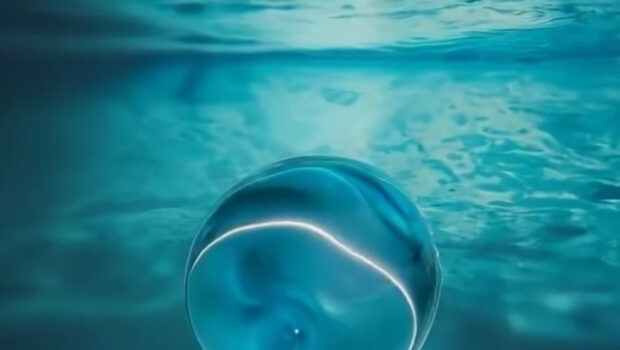
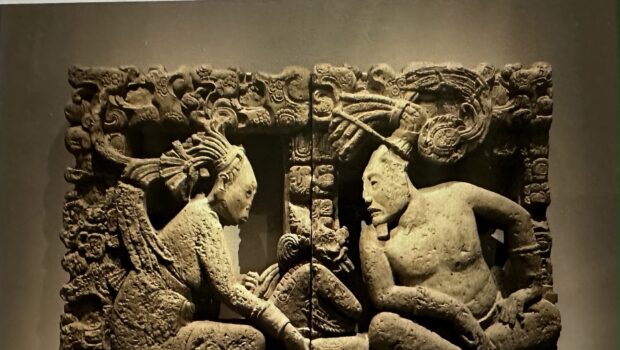

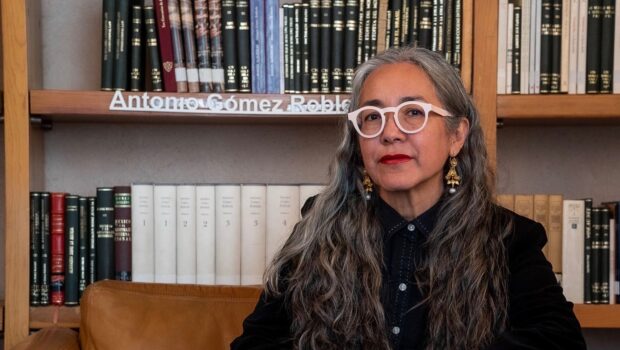

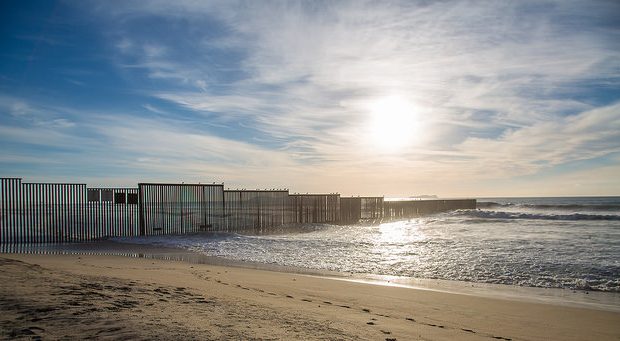

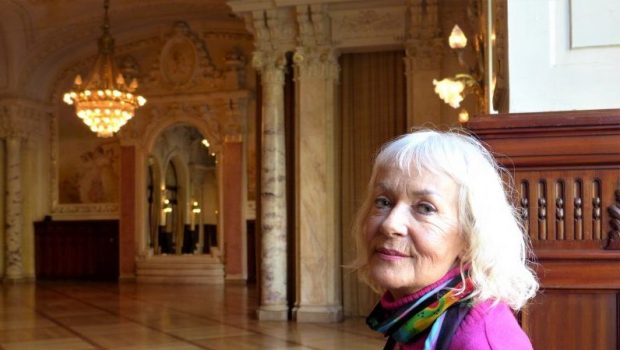

Me encantó este artículo. Muy realista todo el planteamiento.